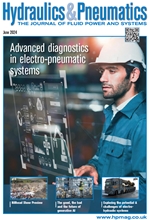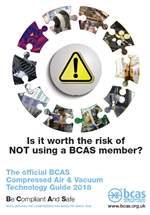Measure to improve energy efficiency
Compressed air accounts for 10% of an industrial company’s electricity bill and for some can be far more. Knowing the system’s actual cost will help you justify targeted action to make your system more efficient, states Marion Beaver, technical officer, BCAS.
Investing in servicing and maintenance to reduce compressed air waste will save energy and costs, and improve the reliability and productivity of the system.
This argument is made even stronger if you can outline exactly how much a system costs a business and therefore the likely savings that are possible.
While the largest energy consuming component in the system is the air compressor(s); it is the demand by users, the overall design and how well the system is maintained that determines the demand placed on the compressor to supply the system and therefore its energy consumption.
But first let’s calculate the costs and provide you with the facts that you can present to justify investment in maintenance and service.
Calculating the system’s annual costs
There are four ways that you can calculate the electrical energy consumption of a compressor.
Option 1
The simplest way to get the actual electrical consumption of the compressor(s) in kilowatt hours (kWh) can be obtained by sub-metering the compressor house.
Option 2
A quicker temporary solution is to install a data logging system over a period of at least seven days. This will determine both the demand profile and the off load running time when there is no demand for air.
To get even more information to help build a usage picture, you could also incorporate flow monitoring into the system.
Option 3
If no metering is in place, then you can estimate the energy consumption of each compressor as illustrated below.
Let’s say that you have a 75kW compressor operating at 7 bar pressure that is on load for 65% of the time and works for 2000 hours per year. We’ll also assume that the motor is 90% efficient.
Energy consumption of the compressor whilst on load = (75 ÷ 0.9) x 0.65 x 2000 = 108,333kWh/year.
You also need to factor in the energy consumption from the offload running. So, let’s assume that for a rotary compressor part-loaded running draws 25% of the full load power then it will be:
(75 ÷ 0.9) x 0.35 x 0.25 x 2000 = 14,583 kWh/year.
Then the total energy consumption of the compressor over the year will be:
108,333kWh/year + 14,583 kWh/year = 122,916 kWh.
If a unit of electricity costs £0.12/kWh then the annual energy cost for this example is: £14,750
If the production time is 6000 hours per year, then this figure increases to £44,250/year.
Also note that for older or less efficient compressors, the offload draw power could be nearer 70% rather than the 25% used in this example.
Option 4
Another option for estimating the energy consumption of compressors is to use the maximum rated package power, which should be available from the manufacturer.
Illustrating the cost of a compressed air system is a useful exercise, but it is of course just the first step in reducing its energy consumption. It does, however, help to justify action. As Peter Drucker once said: “What gets measured gets improved.”
To find out how to reduce the energy consumption of your compressed air system download BCAS latest whitepaper www.bcas.org.uk.
[pic 2 no caption]
-
Smart Manufacturing & Engineering Week
05 - 06 June, 2024
NEC, Birmingham -
HILLHEAD 2024
25 June, 2024, 9:00 - 27 June, 2024, 16:00
Hillhead Quarry, Buxton, Derbyshire UK










